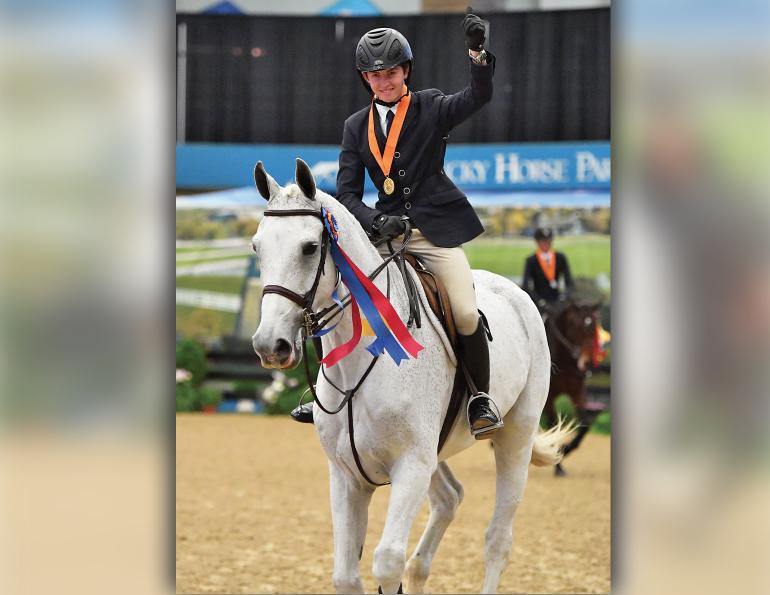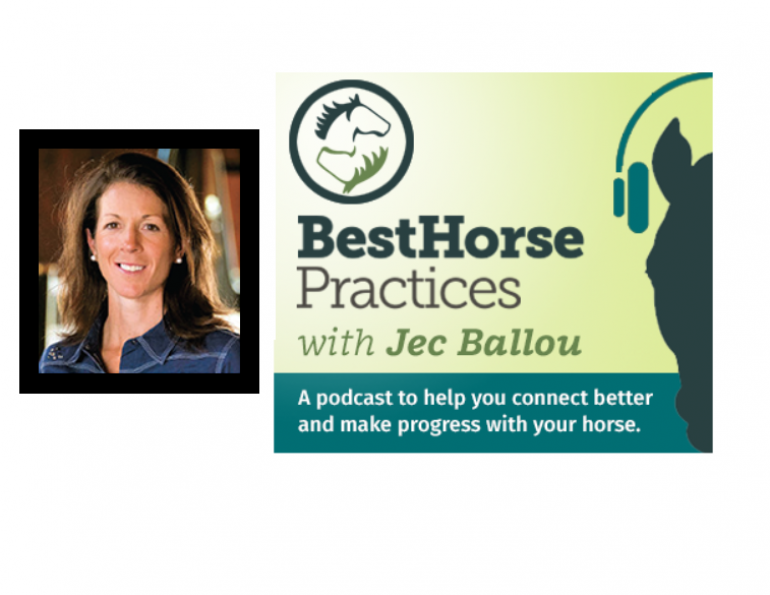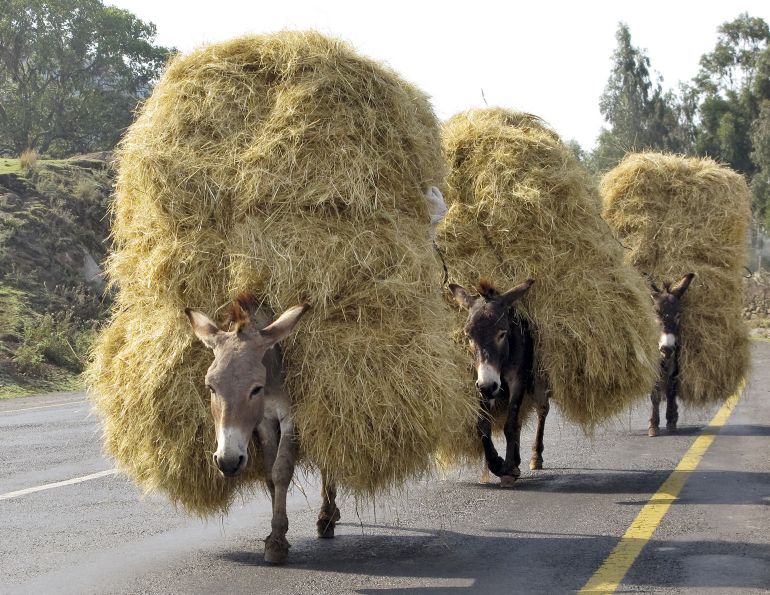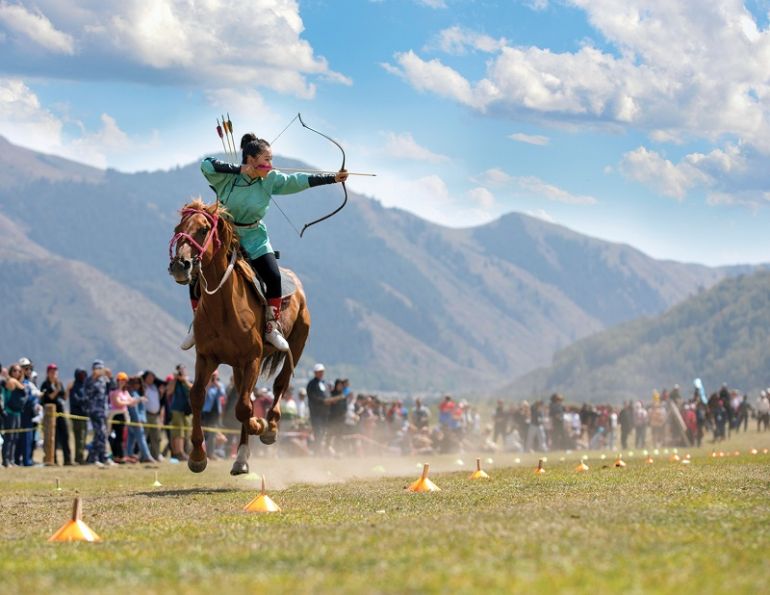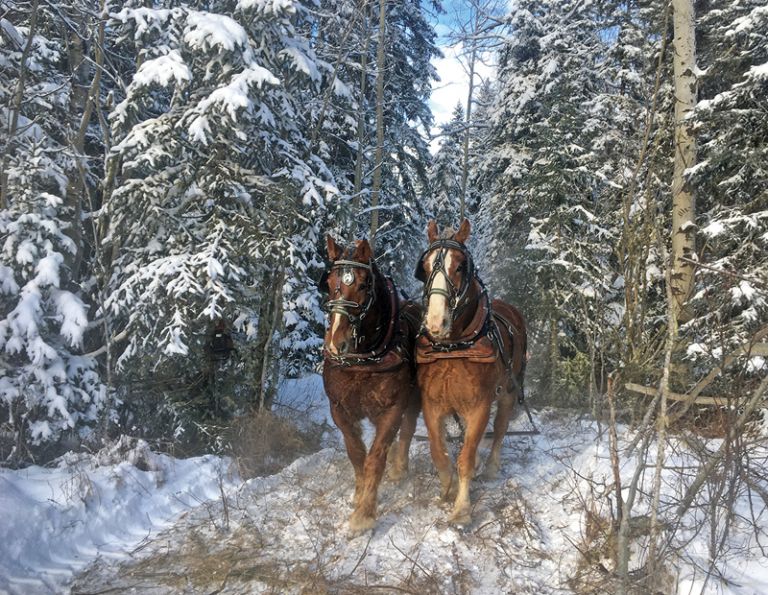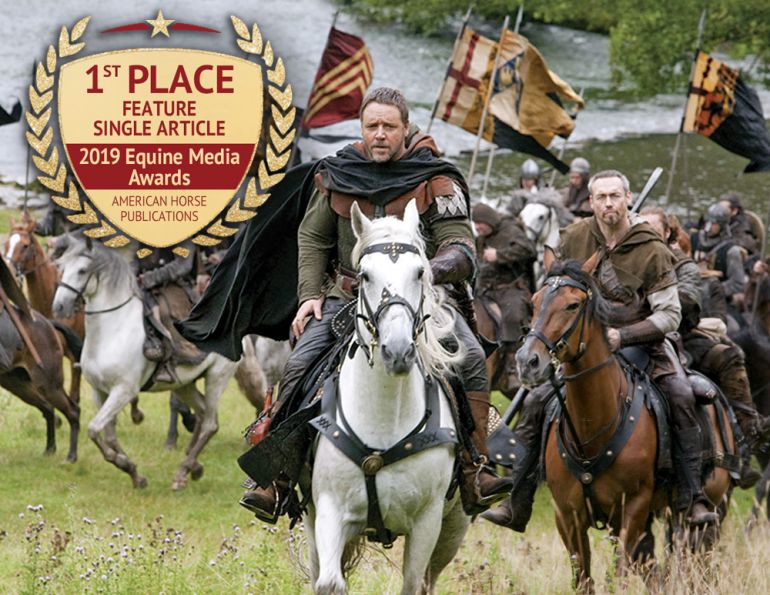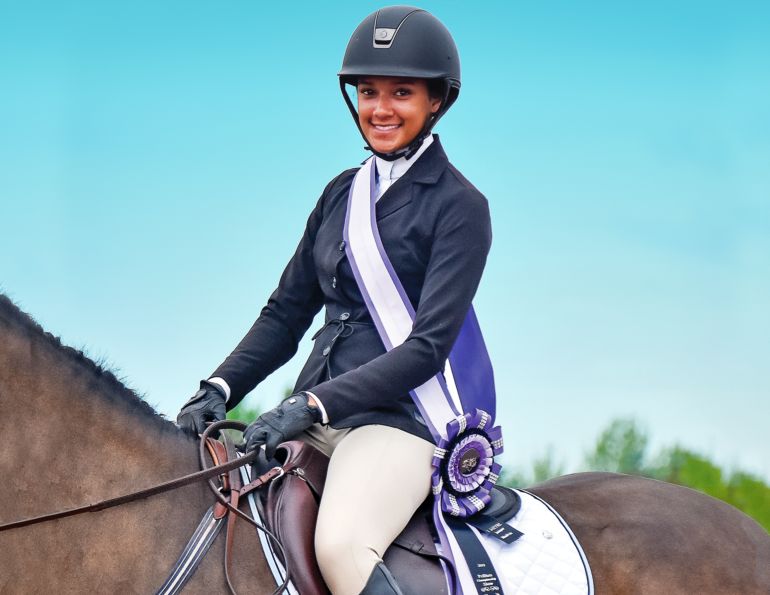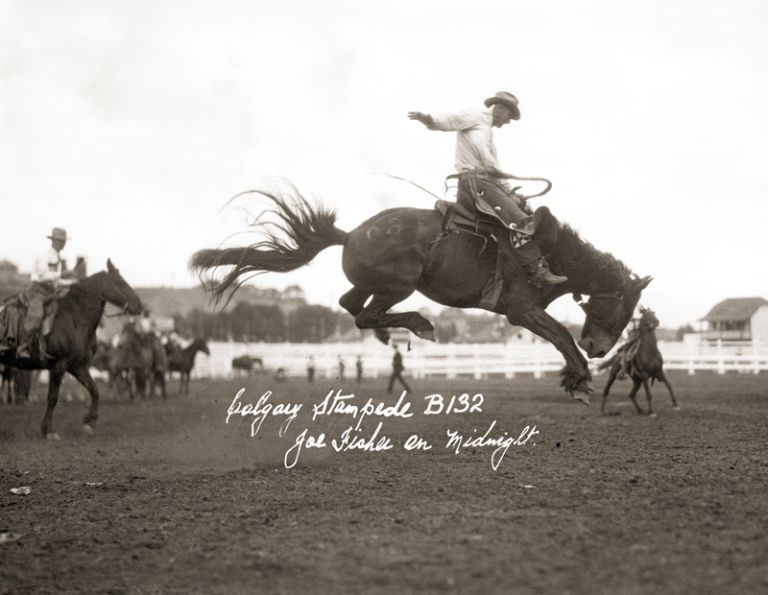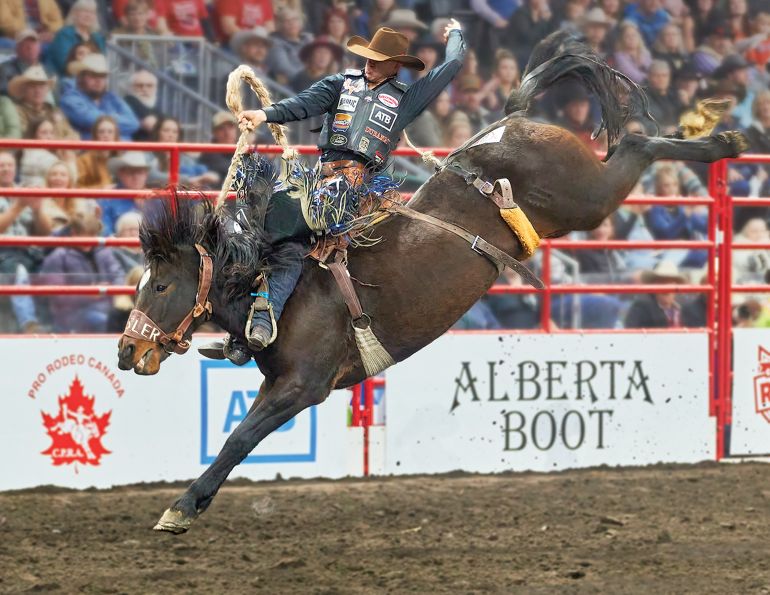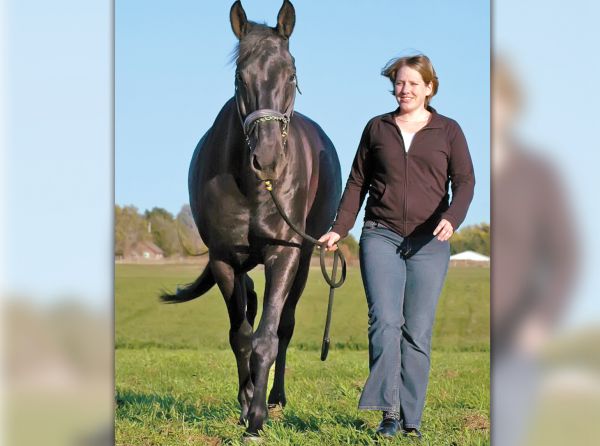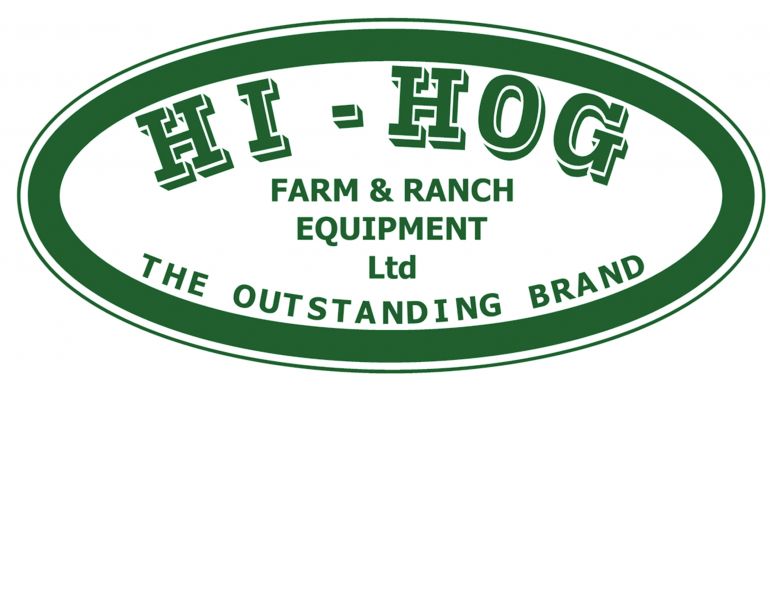By Tania Millen, BSc, MJ
The ASPCA Alfred B. Maclay Horsemanship Championship, known simply as “the Maclay,” is the most prestigious equitation class for under 18-year-olds in North America. Held every fall since 1933, the championship is considered a proving ground for future champions and many teens tailor their junior riding years specifically toward the class. The winners' list is a who’s who of the North American hunter-jumper world and includes American riders William C. Steinkraus (1941), Frank Chapot (1947), George Morris (1952), J. Michael Plumb (1957), Conrad Homfield (1967), Leslie Burr (1972), and Jessica Springsteen (2008), among others. Four Canadians have also won the coveted championship trophy — Laura Tidball (1980), Erynn Ballard (1998), Brian Walker (2001), and Sam Walker (2018) — and all four of them have subsequently represented Canada in show jumping competitions.
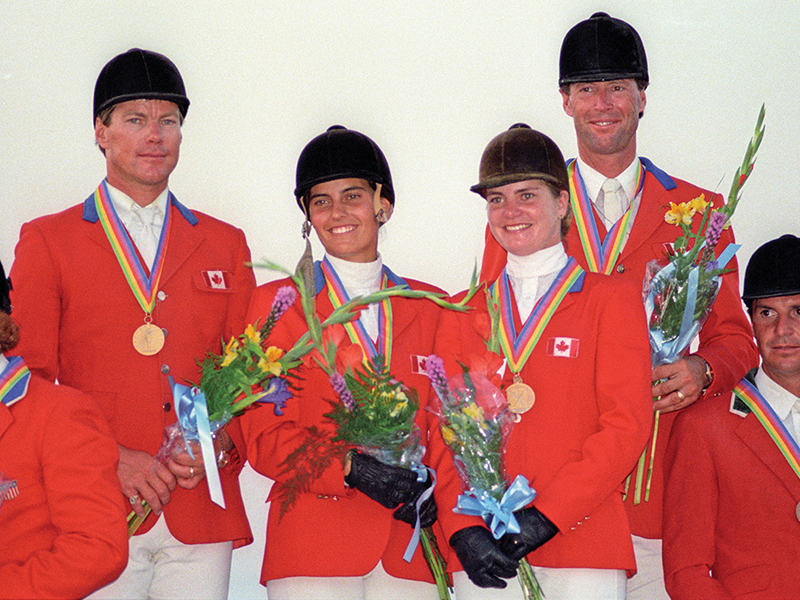
In 1980, Laura (Tidball) Balisky was the first Canadian to win the Maclay Championship. She went on to represent Canada as a member of the Canadian Show Jumping Team including at the 1987 Pan-American Games where they won the team gold medal. (L-R) 1987 Pan Am Gold Medal Team Hugh Graham, Laura Tidball Balisky, Lisa Carlsen, Ian Millar. Photo: Karl Leck, courtesy of Equestrian Canada
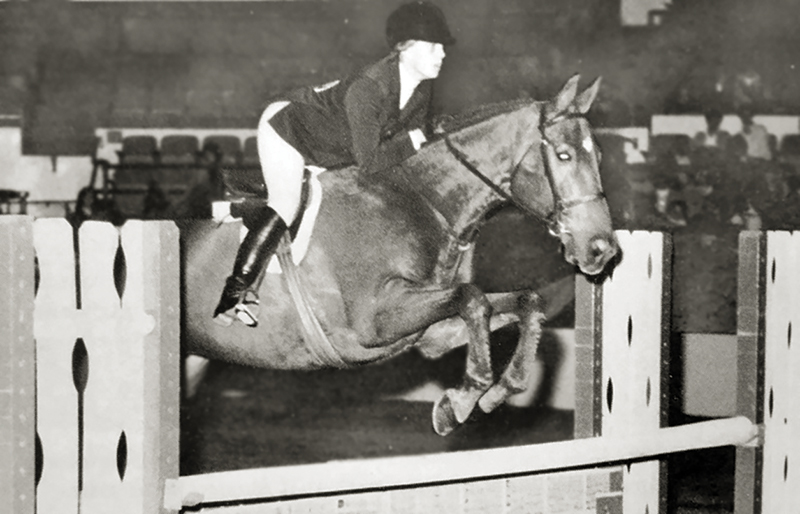
Courtesy of Laura Balisky
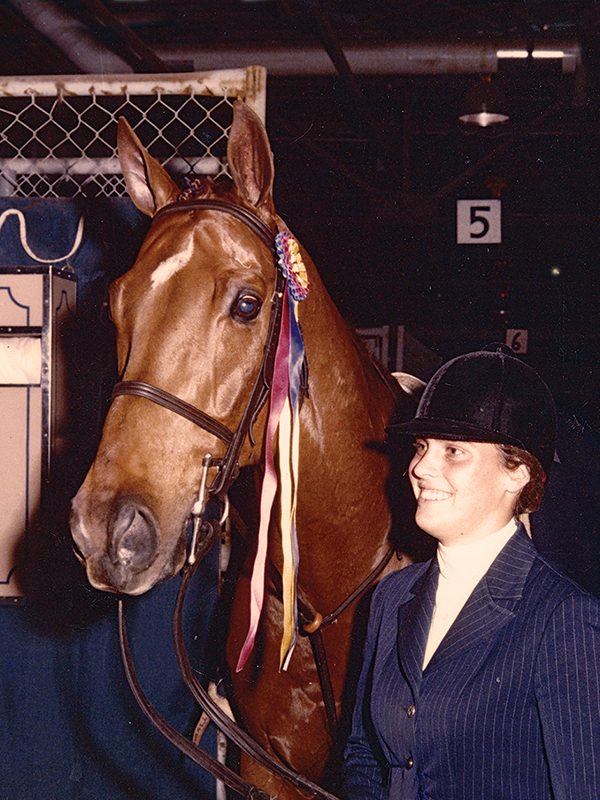
Courtesy of Laura Balisky
Sam Walker is the most recent Canadian to win the Maclay but didn’t plan on being an equitation rider. “I didn’t really know what the Maclay was until I was about 13 years old,” he says. But after seeing the class for the first time in Florida, he decided to enter one. He admits, “I was always a little hesitant to do the equitation because I love the jumpers. But once I did my very first Maclay class, I knew that competing in the [Maclay] final was going to be a really big goal of mine.” Walker says that after a few classes, “The better I got at equitation and the Maclay class, the more my riding improved. So, the more equitation I did, the better I got in the jumper ring, which meant I wanted to continue doing equitation.”
Walker’s explanation of how equitation subsequently helped him in the jumper ring reflects the historical roots of the ASPCA Alfred B. Maclay Horsemanship Championship, which originated when a humane society (ASPCA) and an ethical horseman (Alfred B. Maclay) combined to sponsor a trophy at the longstanding National Horse Show in the United States.
The National Horse Show was founded in 1883 by influential American sportsmen and was held at Madison Square Garden in New York City until 2001, when it had to move as the Gardens were slated for demolition. The American Society for the Prevention of Cruelty to Animals (ASPCA) was created in 1866 and was the first humane society to be established in North America. It was founded on the belief that animals are entitled to kind and respectful treatment at the hands of humans and must be protected under the law. Alfred Barmore Maclay was born in 1871 and subsequently became president of the National Horse Show from 1922 to 1924, after which he was elected president of the American Horse Shows Association (the predecessor to the United States Equestrian Federation) for 12 years. Mr. Maclay believed that horse shows were important for the dissemination of knowledge about horses, hence he wanted to create a trophy that would inspire younger riders to develop exceptional horsemanship skills along with respect and compassion for their equine partners. These three created the Maclay class, which was first held at the National Horse Show in 1933 and was described as “a Horsemanship Cup presented by the ASPCA and donated by Alfred B. Maclay.” That year, Audrey Hasler Chesney bested the 29-rider class, which had a stated purpose of “development of skill in jumping, combined with kindness and gentleness in handling the reins.”
Today, approximately 175 junior riders from across North America compete at the Maclay finals, which are still held at the National Horse Show — the longest-running horse show in the USA. Jennifer Burger is the current president of the show, which is held during the last week of October and the first week of November at the Kentucky Horse Park in Lexington, Kentucky. She says that the show features equitation championships for juniors and adults, plus junior, professional, and adult hunter divisions earlier in the week, but says, “When the Maclay warm-up starts, the whole atmosphere and energy shifts in the arena. The young people come in and they’re very serious. It’s the culmination of their effort, dedication, and years of hard work with their trainers and horses.”
Related: Remarkable Horses of Canada: Hickstead
Riders qualify for the finals through eight regional competitions across the USA where each rider is only allowed to compete on one horse, and riders must be members of the ASPCA to enter. “They’re all winners for even getting there,” says Burger. “But there’s a lot of hardship and emotion as the day goes on. You can see it when a horse goes lame at the last minute or has a rail at the first fence, or a stop. You can feel the heartbreak because the kids put so much into this.”
The class is judged whereby 50 percent of the riders’ overall mark is determined from jumping performances and 50 percent is determined from flat performances, with riders judged on their seat, hands, guidance, and control of the horse.
Burger says, “The talent and effort necessary to be one of the 175 to compete in the Maclay finals — the precision, dedication, hard work, execution, care of the horse, the overall commitment to the time and intense work needed — would teach you so much. Not only to be a professional rider or trainer but a professional anything: a doctor, a lawyer, a professional in the industry. There are so many wonderful life lessons that you learn within the sport of riding, especially at the Maclay level, that riders will carry with them for the rest of their lives no matter where they go and what they do. It’s a brilliant character-building opportunity.”
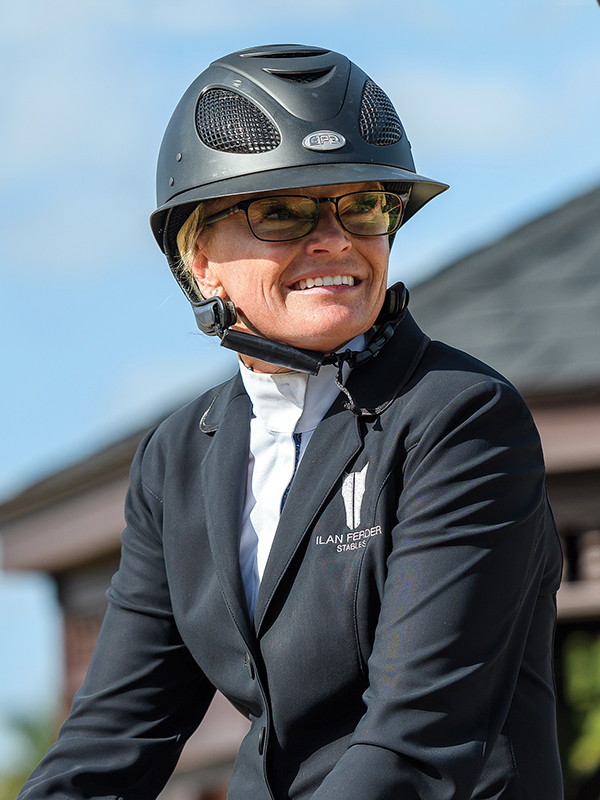
In 1998, Erynn Ballard was the second Canadian rider to capture the Maclay. She is now a sought-after coach, rider, and catch rider, and has established her reputation as one of the hardest working professionals in the industry. Photo: Starting Gate Communications
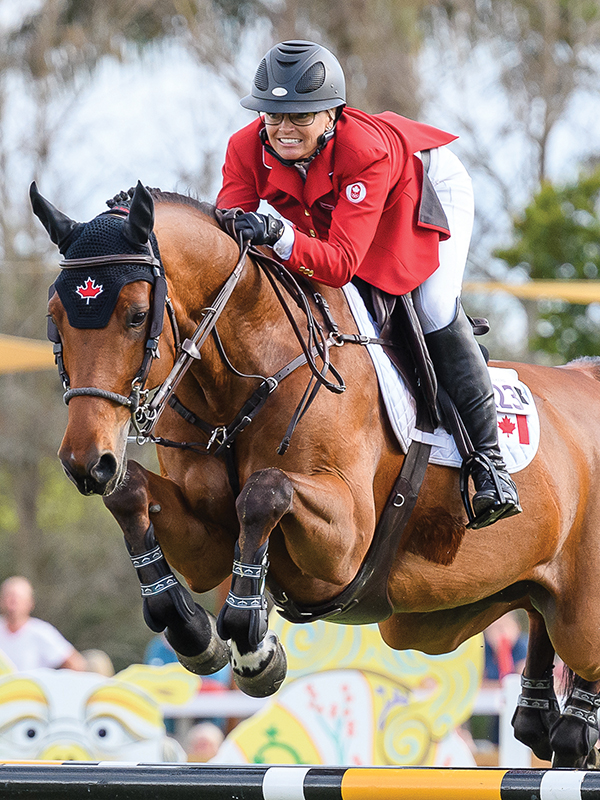
Starting Gate Communications
The Maclay finals begin with a jumping round after which the judges select a smaller number of entries to proceed to the next phase, which is equitation on the flat. For the flat portion, riders are required to walk, trot, and canter, plus judges may request additional flatwork. Following the flat phase, another “cut” is made and the remaining riders are asked back to ride a second jumping course. It’s up to the discretion of the judges whether there is further testing after the second round. The jumping courses must be 1.05 metres (3 feet, 6 inches) high with or without wings, include at least one change of lead and a combination including an oxer, plus one-third of the obstacles must be oxers. Additionally, all courses must include at least three of the following: a bending line, narrow jump, roll-back turn, end fence, and a long approach to a single jump.
In 2021, the winner of the Maclay finals will be crowned at the National Horse Show on November 7, a date many junior riders are already preparing for. Burger explains, “These equitation championships are very important to the juniors, they’re a lifelong goal. It’s the best younger riders in the country who have just worked so hard and it’s wonderful we’ve had four Canadian winners.”
Since Maclay classes are held at American horse shows, qualifying for the finals and winning the championship trophy is extra challenging for Canadians. However, meeting those challenges has certainly paid off for the four Canadians who have managed to win the trophy.
Laura Balisky (nee Tidball), whose family operates Thunderbird Show Park in Langley, British Columbia, was the first Canadian to win the Maclay Championship in 1980. Balisky was subsequently a member of the Canadian Show Jumping Team at the 1984 and 1988 Olympic Games, the 1986 World Championships, and was part of the gold medal-winning team at the 1987 Pan-American Games. She represented Canada at five FEI World Cup Jumping Finals. She now operates Thunderbird Show Stables in Langley with her husband, Brent Balisky.
Erynn Ballard was the second Canadian to win the Maclay in 1998. At the North American Young Riders championships in 1999 she captured the individual gold medal, and in 2000 she won silver medals in both the team and individual events. She made her Nations Cup debut at the 2006 Spruce Meadows ‘Masters’ tournament, helping her Canadian team attain victory for the first time in the event’s history. She is now a sought-after trainer and coach, plus a regular rider on Canada’s Nations Cup Show Jumping Teams. She operates Looking Back Farm in Ontario.
Brian Walker (no relation to Sam Walker) was the third Canadian to win the Maclay when it was held for the very last time at Madison Square Garden in New York City in 2001. Brian made his Nations Cup debut on Canada’s Show Jumping Team in 2017 and is currently based in Europe where he develops quality horses for the hunter-jumper rings.
Sam Walker competed in Maclay classes for four years, from age 13 until he won the championship at age 16 in 2018, and says, “It [competing in Maclay classes] was a huge commitment. It took a lot of people and a big team to make everything happen… and I was very lucky to ride with Missy Clark and John Brennan of North Run.”
Coaching plays a big part in junior rider equitation success, and Missy Clark and her husband John Brennan are well-known for producing top equitation riders. They operate North Run stables in Vermont and Florida and for the past 30 years have coached national level equitation champions, including Canadians Erynn Ballard, Brian Walker, and Sam Walker. Clark says she never intended to become an equitation coach but explains that equitation classes help riders develop their skills, regardless of what their goals are. “Whether you want to be the best jumper rider you can be or the best hunter rider or just the best rider per se, equitation is a by-product of what I teach… which is correct riding,” she says.
“Good equitation over big fences is what it’s all about,” continues Clark. “I’ve always believed that none of this [hunter, jumper, equitation, and other horse events] is a separate sport. It’s just about correct riding and where you go with it. That’s why I don’t treat equitation as its own discipline.”
Clark also believes there are no shortcuts to success, saying, “A lot of the riders that have gone on to do great things in the jumper ring have great basics.” She continues, “Every day we go back to basics: fundamentals of position, and good hands and seat. Then you can add pace management, line, and track.”
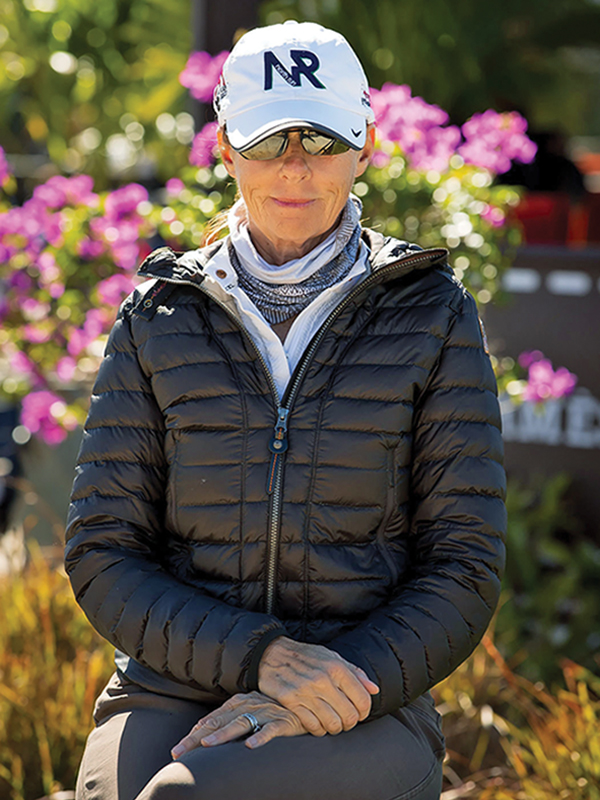
Missy Clark, who owns Waldo, the grey Warmblood gelding ridden by Sam Walker in the Maclay, says that equitation helps riders develop their skills, regardless of their end goals. “It’s just about correct riding.” Photo: Mackenzie Clark
But it’s not just great riding that produces winners. Clark notes that the majority of riders who win the Maclay have natural talent, can handle the pressure, have great feel, plus have an exceptional attitude. She also says that riders need parental support, experience, mileage, as well as the right horse, although finding the right horse can be challenging. “The best equitation horses have to be very patient and have athleticism, great lead changes, good balance, a very good attitude, and be brave and careful,” she explains. “I’ve had people call me about jumpers that weren’t good enough… maybe not careful enough or comfortable jumping 1.40 metres, and many of those horses have become great equitation horses.”
Sam Walker’s Maclay ride was named Waldo, a 17-plus hand, grey, imported Warmblood gelding owned by Clark. She says, “When I initially saw Waldo [as a four-year-old], I immediately liked what I saw and we bought him. He had a huge stride, an excellent jump, and he’s very handsome. But he was a long project. It took us a good four years. But he was so careful… so we just took our time and never rushed.”
“He was an unusual horse,” laughs Clark. “He was either going to be one of the best ones I ever had or I was going to jump in a lake with sandbags on my feet. I wasn’t sure which for a lot of years, but I really believed in the horse and thought that he would be great.”

Sam Walker was 16 years old in 2018, and only the fourth Canadian rider ever to win the Maclay. Photo: Shawn McMillen Photography
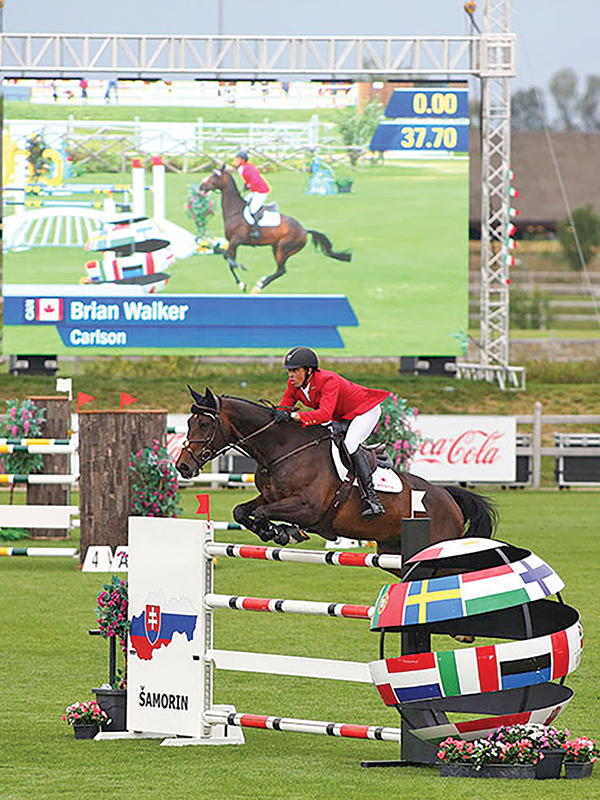
In 2001, Brian Walker became the third Canadian to win the Maclay. Walker and Carlson 93 are shown competing for Canada at CWIO3* Samorin, in Slovakia in September 2017. Photo: Courtesy of CSIO-SamorinII/Equestrian Canada
Clark says that Walker and Waldo connected from the beginning. Walker says, “Having a partnership with your horse is, in my mind, the most important thing. Before I rode Waldo, nobody knew who he was. We started together and the first few lessons were not great. But we just kept working on it, working on it, working on it, and when we went in our first show it was like someone flipped a light switch. From then on he never really put a foot wrong and always tried his best.”
Related: 1968 Olympic Show Jumping Team
Waldo was a very unique ride,” continues Walker. “He goes a little in two pieces — his back end and his front end. But when you put the two together, I think he’s one of the nicest horses of all time in the equitation. He’ll land any lead. He does everything the first time you ask. He’s extremely careful. He has all the characteristics of a very nice Grand Prix dressage horse and a very nice Grand Prix jumping horse, except he has the brain of a nice quiet equitation horse, which makes for a perfect package when you put it all together.”
However, good riding, coaching, and horses only go so far. Jump courses that allow riders to show off their skills are paramount, too. Bobby Murphy has been designing the Maclay Championship courses since 2013 and explains that equitation is the art of riding on horseback, so his job is to create a course that allows the riders to show off their art. As such, he considers himself a course architect, rather than a course designer. Murphy explains that his courses are created to test the riders’ skills at developing pace; using control and balance going forward and coming back; following a track; keeping the horse between the hand and leg; choosing strides; angling fences; getting correct leads; being organized; maintaining position from a forward seat to a balancing seat and sitting in the tack; plus presenting a polished look. However, Murphy explains that the courses are not designed to excessively challenge the horses, saying, “If I can find a way to help the horse out, that’s what I go for. I’m purely looking to test the riders.”
But Murphy also states, “[The course] is very technical. The distances we use are at such a sophisticated level — fine-tuned down to the inch — because we really want the questions answered correctly. These riders are getting judged on their position and flow, but they also need to achieve the goal of doing the test correctly.”
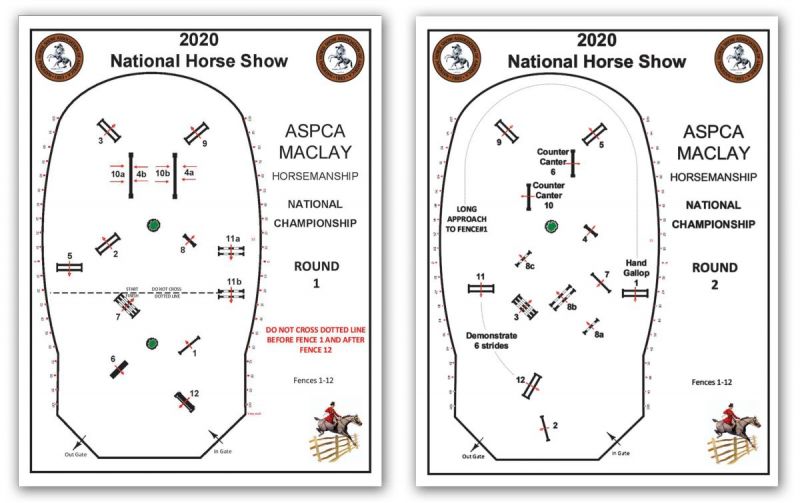
Rounds 1 and 2 from the 2020 ASPCA Maclay Horsemanship championship. Course architect Bobby Murphy says the courses are very technical and designed to test the riders, but not to excessively challenge the horses. Photos courtesy of Phelps Media
To help the judges do their job, the jumps have evolved so that every moment of every ride can be seen. Most of the jumps no longer have wings and Murphy explains, “When you take the wings away, then the judge can watch the rider better. There’s nothing blocking their view. It really shows off the art. The riders’ legs have to be perfect; their hands have to be perfect. There’s no room for error.”
Every year, Murphy tries to ensure that the Maclay jumps reflect the historical look of the class. All the jumps are custom-built specifically for the class. “This year, hedges are on my mind,” says Murphy. “So, there’s a pretty good chance you’re going to see a hedge-to-hedge combination or something at the 2021 Maclay finals.
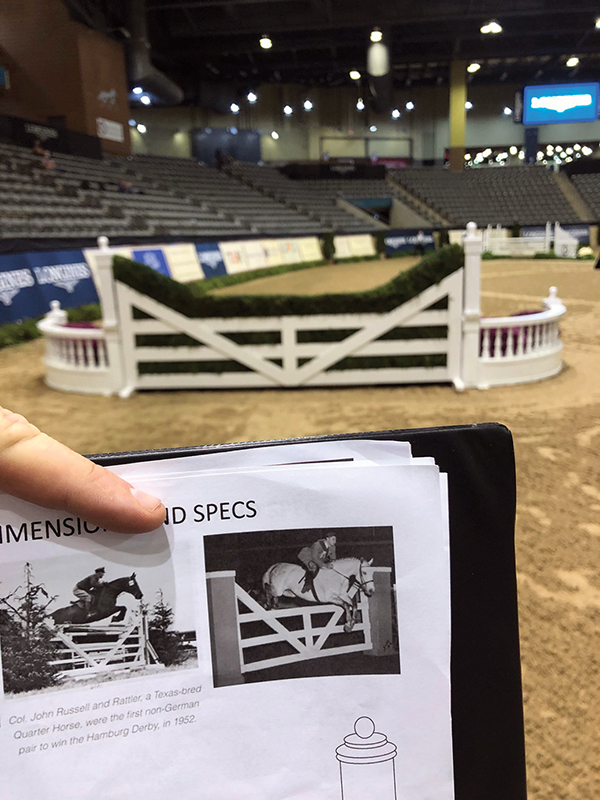
Recreating yesteryear. The jumps are custom-built, and every year Bobby Murphy creates jumps that reflect the historical look of the class. Photo: Bobby Murphy
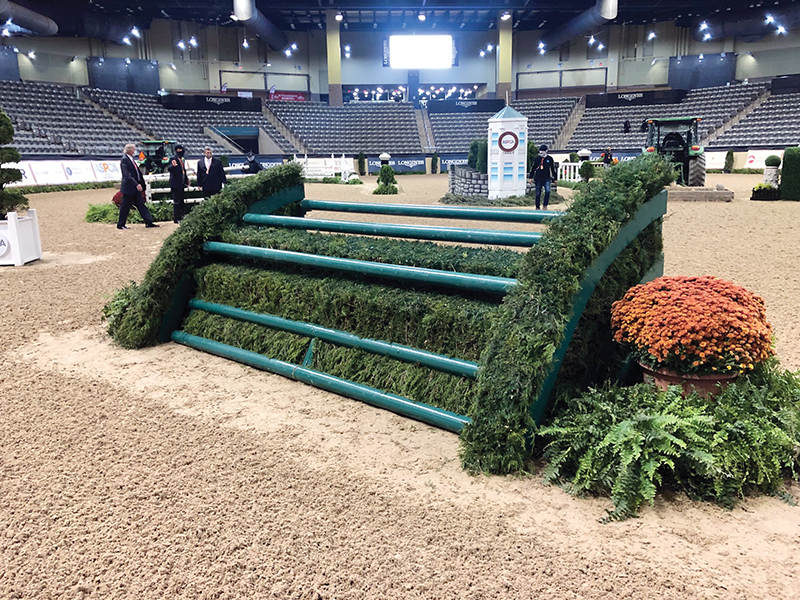
Bobby Murphy creates courses that allow riders to show off the art of their equitation. Most of the jumps have no wings to allow the judges to see the riders better. Photo: Bobby Murphy
“We will always be asking the same questions, we’ll just be changing the canvas that the riders are jumping on.”
When Sam Walker won his Maclay trophy, it was Murphy’s courses and tests that allowed him to show off his skills.
“I was in second place most of the way through [the 2018 Maclay finals], says Walker. “I went quite early in the class and was leading [after the jumping phase] then got beat by another boy. I flatted quite well, and he and I stayed in the same positions — first and second. Then we rode the second jumping round, and I was moved up to first. Going into the test [the very last judging round where riders are asked to perform specific tasks both on the flat and over fences] I was in first place and had a nice safe round, so the judges decided it was my turn to win that day.
“Winning the Maclay has given me a lot more exposure and allowed me a much bigger audience,” says Walker. “Experiencing the pressure of that class has helped me in terms of the way that I go into a class now. It puts a lot of confidence in you as a rider and teaches you how to handle pressure and deal with different environments.”
After his win, Walker achieved another of his goals: riding on Canada’s senior show jumping team. In February 2020 at age 18, Walker was a member of Canada’s FEI Jumping Nations Cup Team at Deeridge Farm in Florida where the team finished fourth in the CSIO5*, a maximum 1.60 metre class. Incidentally, the team included Tiffany Foster, who rode at Thunderbird Show Stables with Laura Balisky as a junior before winning two prestigious equitation classes, and Erynn Ballard. A clear testament to the value of equitation.
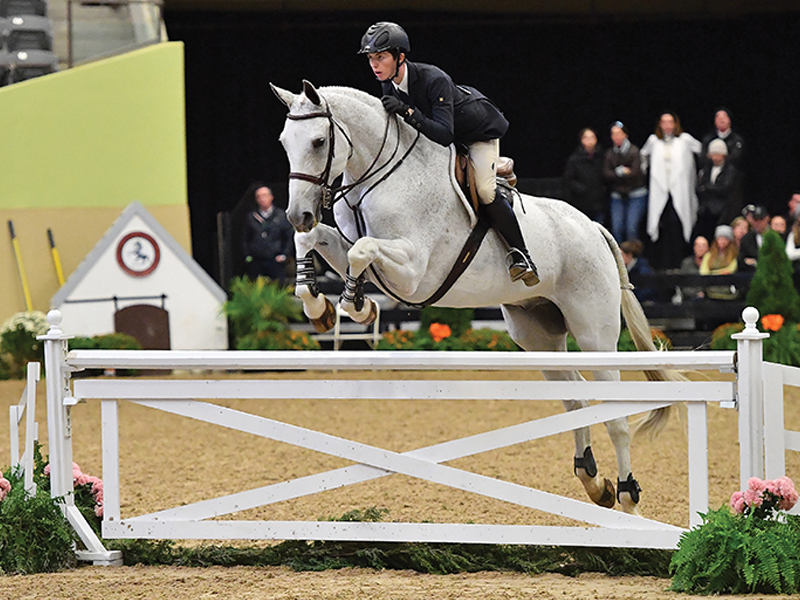
Sam Walker and Waldo connected from the start. “Having a partnership with your horse is, in my mind, the most important thing,” says Walker. Photo: Shawn McMillen Photography
That value is part of what continues to draw junior riders from across North America to Maclay classes, almost 90 years since the first ASPCA Alfred B. Maclay Championship Trophy was awarded. Walker explains, “Good equitation has a place and there’s value in it. I got tonnes of value out of it to further my career. It’s worth putting in your hours, putting in your time, getting recognized, and a lot more opportunity will come up than you might think.”
Clark concurs: “The Maclay is a really special class and it serves a great purpose for many kids to develop their skills in riding and gives them opportunities to go on to other things in life. I think a lot of kids [who compete in Maclay classes] stay in the sport and want to make riding part of their life. [Winning] is a great accomplishment — it’s borne out of your talent and hard work and determination — but once it’s over you have to continue to prove yourself. If you look back at the winners, many have gone on to do great things, especially in show jumping.”
To that end, hopefully, there will be more Canadian juniors who choose to venture south of the border and challenge themselves by riding in Maclay classes. Maybe they will also be lucky and skilled enough to win the championship trophy, then continue to practice their art and ultimately ride for Canada, too.
Related: Canada's Horse Industry Builders
Main Photo: Canadian Sam Walker riding Waldo in the victory gallop at the ASPCA Alfred B. Maclay Horsemanship Championship in 2018. Shawn McMillen Photography



